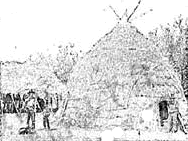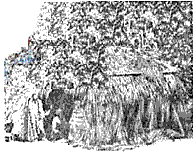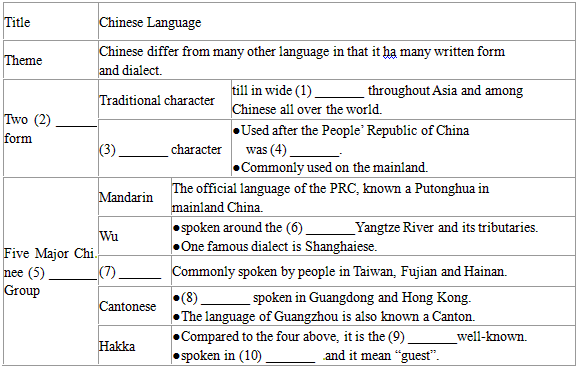
科目: 来源:0110 期中题 题型:阅读理解
查看答案和解析>>
科目: 来源:0106 月考题 题型:完形填空
| 完形填空。 | ||||
| When we talk about a bad man, we like to call him a "wolf". But is it really true that the wolf stands for devil and ugliness? Have you read the book The Wolf Totem (狼图腾) by a famous writer Jiang Rong which tells the story of the relationship between wolves and human beings? Have you ever 1 the wolves' world? If you had, you would 2 the wolves. In the book, wolves are heroes on the large grassland. They know more about 3 than humans. They can attack lambs without disturbing their mothers. They also know how to 4 full use of the shape of land to 5 sheep. I believe that if wolves were humans, they would be 6 experts good at fighting. The wolf is a kind of special creature that can deeply understand 7 . Each wolf serves its group with its heart and soul. A 8 wolf has little power, but a pack of wolves 9 nothing. All the wolves obey the rules. 10 they are defeated, they run away together. It is their teamwork 11 makes wolves powerful. The wolves also have great self-respect and won't 12 to anyone. The writer, who wrote the book The Wolf Totem, 13 stole a one-month-old baby wolf and raised it very carefully. To his 14 , he found the little wolf still wanted to go back with 15 wolves. He bit through the iron chain that limited him. The wolf was 16 and he never gave in, fighting 17 his death. The little wolf died as a glorious fighter. I was shocked by this kind of 18 : wolves are one of the most respected creatures on earth. I want everyone to look at wolves in a 19 way. They are our teachers. They show us how to survive and 20 in this not simple and dangerous world. Please honor the wolves, please honor all these heroes of nature! | ||||
|
查看答案和解析>>
科目: 来源:0107 月考题 题型:阅读理解
查看答案和解析>>
科目: 来源:福建省高考真题 题型:阅读理解




查看答案和解析>>
科目: 来源:贵州省高考真题 题型:阅读理解
查看答案和解析>>
科目: 来源:重庆市高考真题 题型:阅读理解
查看答案和解析>>
科目: 来源:0112 期中题 题型:完形填空
| 完形填空。 | ||||
| Professional (专业的) sports are very popular in the United States and they are big business. The most popular sports are basketball, football and baseball- 1 has its own season and 2 supporters. Professional teams are named for the cities 3 they are located. When a team plays in a championship game, most people in the city 4 the game with interest and enthusiasm. Basketball is 5 around the world. Professional basketball games in the US 6 indoors during winter months. From November to April 7 can find a professional basketball game several 8 a week in most large American cities. Basketball is an American sport. It 9 the national pastime. The game is played in the evening 10 every night of the week and on weekends 11 . The season begins in April and 12 in October. Football 13 most popular professional sport in the US, too. It is played on Sundays 14 the fall from August to October. American football is different from international football, 15 Americans called soccer. 16 games require 17 and specialized skills. Professional players are very 18 . The most famous players 19 millions of dollars for their playing skill. American best players have higher 20 than the country's president. | ||||
|
查看答案和解析>>
科目: 来源:0118 期中题 题型:阅读理解

查看答案和解析>>
科目: 来源:0119 期中题 题型:阅读理解
查看答案和解析>>
科目: 来源:0119 期末题 题型:填空题
查看答案和解析>>
湖北省互联网违法和不良信息举报平台 | 网上有害信息举报专区 | 电信诈骗举报专区 | 涉历史虚无主义有害信息举报专区 | 涉企侵权举报专区
违法和不良信息举报电话:027-86699610 举报邮箱:58377363@163.com